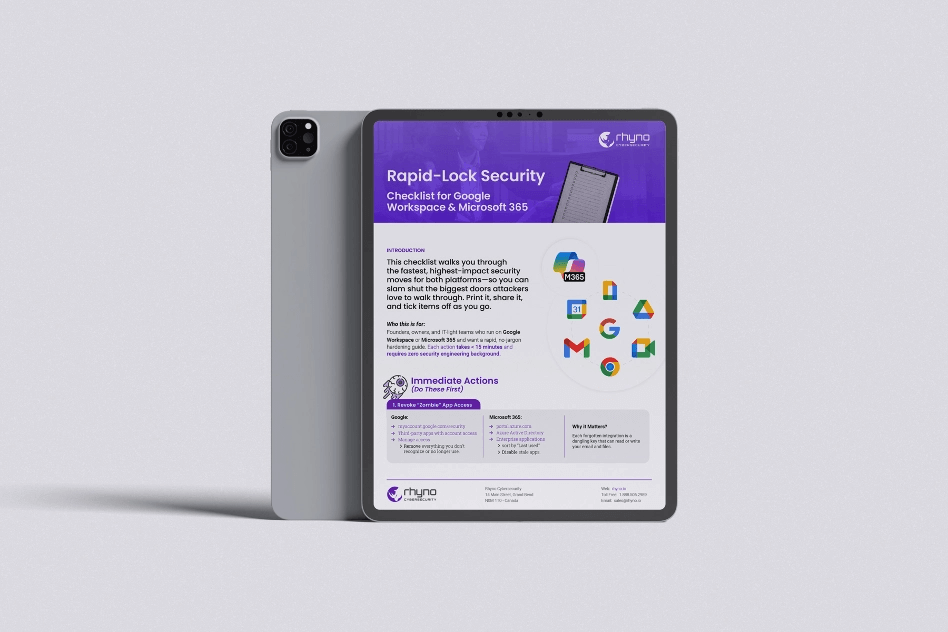So you got a suspicious email and you clicked on it. Don’t panic just yet. Phishing emails are designed to trick you into revealing sensitive information or installing malicious software on your device. They’re undoubtedly cunning, but understanding what to do next can save you from a potential nightmare. Let’s dive into what phishing emails are, how to recognize them, and what steps to take if you fall for one.
What is a Phishing Email?
A phishing email is a type of cyber attack where the attacker masquerades as a legitimate entity to steal sensitive information such as usernames, passwords, and credit card details. These emails often appear to come from trustworthy sources like banks, social media sites, or even your workplace. The primary goal is to trick you into clicking on a link, downloading an attachment, or providing confidential information.
Recognizing a Phishing Email
- Check the Sender’s Email Address
Phishers often use email addresses that look like they come from a legitimate source. For example, instead of [email protected], you might see [email protected]. It’s a tiny difference, but it’s a big red flag.
- Look for Generic Greetings
Most legitimate companies will address you by your name. If the email starts with “Dear Customer” or “Dear User,” be cautious. It’s likely a phishing email.
- Beware of Urgent or Threatening Language
Phishing emails often use scare tactics to get you to act quickly without thinking. Phrases like “Your account will be suspended” or “Immediate action required” are designed to push you into making a mistake.
- Check for Grammar and Spelling Errors
Legitimate companies take time to proofread their communications. If the email is riddled with errors, it’s probably a phishing attempt.
What to Do If You Receive a Phishing Email
- Don’t Click on Any Links
This is crucial. Links in phishing emails can direct you to fake websites designed to steal your information. Instead, hover over the link to see the URL. If it looks suspicious or doesn’t match the supposed sender, don’t click.
- Don’t Download Attachments
Phishing emails often include attachments that contain malware. If you download and open these files, you could infect your computer. If you’re unsure, it’s better to delete the email.
- Verify the Email with the Sender
If the email claims to be from a company you do business with, contact them directly using a known email address or phone number. Do not use any contact information provided in the suspicious email.
- Report the Email
Most email services have options to report phishing. For example, you can click the three dots next to the reply button in Gmail and select “Report phishing.” This helps improve the service’s filters and protect others from similar attacks.
- Delete the Email
Once you’ve reported the email, delete it from your inbox. You don’t want to keep it around as a potential hazard.

Steps to Take if You’ve Fallen for a Phishing Scam
- Change Your Passwords
Change your passwords immediately if you’ve entered your login details on a phishing site. Also, make sure to update passwords for any accounts that use the same credentials.
- Enable Two-Factor Authentication (2FA)
Two-factor authentication adds an extra layer of security to your accounts. Even if a phisher gets your password, they won’t be able to access your account without the second factor.
- Monitor Your Accounts
Keep an eye on your bank statements and credit reports for any unusual activity. Early detection is key to preventing significant damage.
- Run a Security Scan
Use your antivirus software to run a full scan of your device. This can help detect and remove any malware that may have been installed.
- Inform Your Contacts
Phishers often use compromised accounts to send out more phishing emails. Let your contacts know that your email was compromised so they can be on the lookout for suspicious messages.
Preventing Phishing Attacks
While knowing what to do after receiving or clicking on a phishing email is crucial, preventing such incidents in the first place is even better. Here are some proactive steps you can take to safeguard your online presence.
- Educate Yourself and Others
Knowledge is power. Regularly educate yourself about the latest phishing tactics and share this information with friends, family, and colleagues. Many phishing attacks succeed because people are unaware of the signs to look out for.
- Use Strong, Unique Passwords
Using strong, unique passwords for each of your accounts can prevent phishers from gaining access to multiple services if they manage to steal your login credentials. Consider using a password manager to generate and store complex passwords.
- Keep Your Software Up to Date
Software updates often include security patches that protect against known vulnerabilities. Ensure that your operating system, browsers, and any other software are always up to date.
- Enable Security Features
Many services offer additional security features, such as security questions, email notifications for new logins, and account recovery options. Enabling these features can provide additional layers of protection.
- Be Cautious with Personal Information
Be wary of sharing personal information online, especially on social media. Phishers can use this information to craft more convincing phishing emails. Set your profiles to private and only share personal details with trusted sources.
Conclusion
Phishing emails are a prevalent and evolving threat in the digital world. You can significantly reduce the risk of falling victim to these deceptive attacks by staying informed, vigilant, and proactive. Remember, if you do receive a phishing email, don’t panic. Follow the steps outlined to protect yourself and mitigate any potential damage.
At Rhyno Cybersecurity, we are dedicated to helping individuals and businesses stay safe from phishing and other cyber threats. With advanced threat detection, employee training, 24/7 support, incident response, and regular security audits, Rhyno Cybersecurity provides the comprehensive protection needed in today’s digital landscape.
Stay safe, stay informed, and don’t hesitate to seek professional help to secure your digital life.
MANAGED CYBERSECURITY SOLUTIONS
Rhyno delivers a range of activities that combine to fully protect your infrastructure and data from cybercriminals, anywhere and everywhere, 24/7/365.
About Rhyno Cybersecurity Services
Rhyno Cybersecurity is a Canadian-based company focusing on 24/7 Managed Detection and Response, Penetration Testing, Enterprise Cloud, and Cybersecurity Solutions for small and midsize businesses.
Our products and services are robust, innovative, and cost-effective. Underpinned by our 24x7x365 Security Operations Centre (SOC), our experts ensure you have access to cybersecurity expertise when you need it the most.

